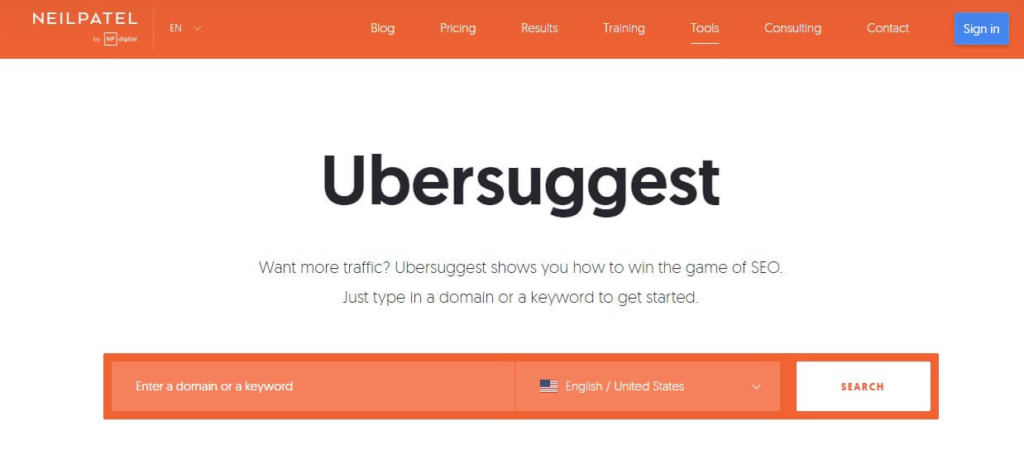Composing blog entries is simple. Are they creating stellar blog content, however? To succeed, a lot more time and work must be invested.
Anybody can construct a sentence, but it may be well-written or even make sense! We’ll detail some amazing blog post writing tips you can use in this article to slow down your writing. You will become a better and more productive writer if you set aside a little time to organize your thoughts and prepare your pieces.
Using these 10+ amazing blog post writing tips each time you publish a piece, you’ll develop good habits to improve your blogging. Without wasting your time, let’s start diving into 10+ tips.
Table of Contents
1. Understand Your Audience: A Key to Captivating Writing

This is undoubtedly the most crucial item on the list, so pay attention to it.
Understanding your audience will help you understand their requirements, interests, and preferences. Also, it will help you determine the degree of familiarity your audience has with the subject at issue, enabling you to produce a piece that is most appropriate for their level of expertise.
Take action by noting the following significant information for your target audience:
- How much prior knowledge do they have on the subject?
- What is the purpose of your article? To instruct, awe, or stir up motivation? or another thing?
- What is the most pressing issue that your post can solve for them?
2. Find Your Winning Words: Mastering Easy Keyword Research for Engaging Content
You may learn more about what your viewers are searching for on Google and how your piece might fit into their search by performing some simple keyword research.
You may get a quick sense of the keywords people are looking for when considering your topic by using tools like Google Keyword Planner and Ubersuggest recommendation tool.

Choose a keyword term for your post that gets at least 1–10k monthly searches using the tools mentioned above.
3. Mastering Your Niche Through Expertise and Tailored Content

A brand must possess the knowledge and credentials necessary to be considered an authority in its industry.
Both a tennis instructor and a law firm wouldn’t try to convince you of their expertise in real estate transactions by providing you with culinary suggestions. If they do, we would look for another person to do your tax return.
After you’ve identified your specialty, give it your all to become an authority on the subject and address every aspect in your writings (like Backlinko and Wellness Mama).
You will have a good idea of their problems if you took the time to identify your audience. To locate your sweet spot, combine the audience’s pain concerns with your area of expertise and the topics they like to read about.
This will provide your articles an advantage by first attracting readers’ attention with catchy headlines, and then by providing the finest guidance possible in the body of the content, enabling them to achieve their goals.
4. Unleashing Your Writing Potential Through Thorough Research

Do your study before writing a single word. Avoid attempting to bluff your way through it by remaining still. No matter how much you believe you know about a subject, there will always be someone who knows more or something that you don’t already know about it.
Nothing is worse than a piece that has been inadequately researched and contains content that readers can obtain elsewhere. Readers will just shut the browser and go back to their search results if they believe your content to be “thin.”
we can’t stress this enough: dedicate an hour or more to your study. Research is not a time waster; it is a crucial step in the writing process.
Search for your topic incognito on Google, then click on each link that appears on the first two pages of results. Go through each link and bookmark those that seem useful (you might want to reference information from these links in your post). As you proceed, make a note of any intriguing details, data, or concepts you might want to look into more for your post.
5. Note-taking and Outlining: Key Steps for Effective Writing

Making an outline and using note-taking strategies throughout the research phase is essential for improving your writing. By using these techniques, you may effectively arrange your ideas and guarantee a final product that is well-structured and cohesive.
First of all, always have a special tool for taking notes, whether it’s a real notebook or a computer program like Google Docs. This makes it possible for you to note significant ideas, quotations, and references when you come across them while conducting your research. By making a note of important information, you can quickly go back to it later without worrying that you’ll lose or forget important particulars.
Making an outline also gives you a direction for your writing. It gives you a structure for arranging your thoughts and guarantees that your article flows logically. Before breaking them down into subsections, first, determine the primary parts or chapters of your work. You can keep your work coherent and clear by using this hierarchical arrangement.
Keep in mind that taking notes and outlining is not only for text. Doing rough drafts or storyboards for a project that includes visual components, like presentations or infographics, may be quite beneficial in helping you visualize your ideas and arrange them in a pleasing way.
You give yourself the power to organize your thoughts, keep your focus, and produce a well-structured and interesting piece of writing by adding note-taking and outlining to your writing process.
6. Create a Catchy Title
The secret to success when trying to pique the interest of potential readers is a catchy title. Your title should be succinct, enticing, and make a value claim that cannot be disputed. Take into account using the following tactics to genuinely engage your readers and persuade them to click through and read your blog post:
Be Concise
Keep your headline succinct and direct. Make use of strong, memorable words that command attention. You may make it simpler for readers to comprehend what to expect from your content by conveying your message in a clear and succinct manner.
Create Intrigue
By giving readers a clue or a sneak peek of what they may learn in your post, you might pique their interest. Ask a challenging question, provide a startling fact, or draw attention to an intriguing facet of your subject. Readers are drawn in by intrigue and get ready to learn more as a result.
Promise Value
Inform your readers of the advantages of reading your blog article. Acknowledge their concerns and provide a solution or insightful information. Employ verbs like “find,” “master,” “unlock,” or “transform” to communicate the value they will obtain. Promiseing concrete advantages makes readers more likely to click on your title.
Use Numbers
Use numbers in your headline to make it more detailed and credible. Numbers attract attention and provide the impression that the text is broad and well-organized. For instance, “10 Suggestions to Enhance Your Writing Abilities” or “7 Techniques to Increase Productivity.”
Power Words and Urgency
Use emotional and urgent phrases that elicit strong feelings in your headline. Readers are drawn in and feel that they cannot afford to miss your content when you use words like “essential,” “unveiled,” “ultimate,” “secret,” or “life-changing.”
Make sure your headline is compelling because it serves as the entrance to your blog content. Spend some time creating an attention-grabbing title that compels users to read your content, and watch your popularity grow.
7. Hook Your Readers from the Start: Unleash the Power of Introductions
Your essay’s first few sentences should grab the attention of the reader and arouse excitement and a strong sense of connection. A strong opening leaves your audience wondering, “We couldn’t agree more, this speaks to me, or even “Wait, really? Please elaborate.”
No need to fret, introductions don’t need to be difficult or very brilliant. Here is a suggestion on how to proceed if you get stuck:
- Start with a Bang: Highlight the most engaging part of your subject in the opening paragraph. Provide a tidbit of knowledge that will arouse interest and cause readers to lean in. This first revelation ought to be the hook that draws them in and piques their interest.
- Expand and Contextualize: Provide a succinct justification in the second paragraph to elucidate what you just said. Make connections for your viewers by demonstrating how this fascinating fact pertains to the larger context of the topic. This demonstrates how important and pertinent your opening remark was.
- Set Expectations: Lastly, in the third paragraph, make it plain to the reader what to expect from the rest of your essay. Give them a sneak preview of the fascinating revelations, wise counsel, or provocative viewpoints that are in store for them. This motivates people to keep reading and sets the framework for continuous involvement.
Keep in mind that the introduction acts as a strong entry point into your content. Create it with purpose, making sure that it quickly connects with your readers and entices them to read more of your work.
8. Write in a Conversational Tone: Engage Your Readers
It’s crucial to remember the value of style and tone while writing your blog content. These factors have a big influence on how people react to your work.
Writing as though you were having a conversation with your reader is a useful strategy. By using a conversational tone, you establish a connection with your audience and give them the impression that they are having a personal conversation with you rather than just reading a blog article.
9. Boost Your Content by Engaging Visuals with Images

Employ photos in your post to break up the text and highlight any key points. While a reader is scrolling down the page, elements like graphs and quotations may really attract their attention and entice them into the content.
Provide a link if you include statistics, figures, or research in your message. It appears as though you are fabricating statistics when you don’t give links. Giving credit for your information will increase the authority of your message.
This visual communication guide will provide you with suggestions on what kinds of visuals to use, such as infographics, diagrams, and graphs.
If you don’t have a photo to use as an illustration for your articles, there are several decent banks of stock pictures available online today. Finding the ideal image for your article is the subject of its own blog post, which we have published.
10. Make Your Blog Post Scannable
Most blog postings are not read word-for-word by readers. Instead, they scan them to find the data they require.
Because of this, it’s crucial to format your postings so that they are easy to scan. That will make it easier for your visitors to get the information they need quickly, increasing the likelihood that they’ll visit your site again.
Here are some ideas for improving the scannability of your blog posts:
- Use Subheadings: Subheadings make it easier for readers to understand the major points of your article while also assisting you in staying organized and on the topic while writing.
- Write Short Sentences: It’s much simpler to read short sentences. It might be challenging to comprehend long phrases.
- Keep Paragraphs Short: It’s more difficult to read when your paragraphs are overly long. With a few one-sentence paragraphs to catch the reader’s attention, we advise utilizing 2-4 sentences in the majority of your paragraphs.
- Use Bullet Points: Instead of putting items in a sentence whenever you have a list, utilize bullet points to keep your message concise, clear, and simple to scan.
Your viewers will be more inclined to read the entire content if you follow these guidelines to make your writing aesthetically appealing.
11. Optimize Your Blog Post for Search Engine
You’re skipping a step if you believe you know how to produce a nice blog article yet it gets no traffic.
You must improve your SEO for your article to get a lot of visitors, thus, we wrote a separate page with SEO advice for bloggers. Most of your job is already done if you’re using an SEO plugin like Rank Math, provided you already have it set up on your website.
A target keyword, a title including the keywords, an SEO title, and a meta description are all required.
Moreover, your text must have more words than 300. But, we advise you to stick to a word count of at least 1000.
Also, the photographs in your article must be well-optimized. Before you upload them, check that they are the appropriate size and have meaningful names. Also, each picture should have appropriate alt tags and classifications.
12. Compelling Call to Action
Congratulations! You’ve learned some incredible advice for writing engrossing blog posts in 2023. It’s crucial to act now to differentiate your blog from the competition. But what ought to be your next move? Let’s look at a few effective calls to action (CTAs) that will make readers want to interact with your content.
What ought to be the CTA for your website? You could appeal to your audience to:
- Subscribe to our newsletter for exclusive insights and tips!
- Share your thoughts in the comments!
- Spread the word! Share this post on social media.
- Explore our premium product for advanced blogging strategies!
The 10+ amazing blog post writing tips for producing blog entries is now complete.
It’s not always necessary to write in a stressful manner. Every time you create a piece, completing one of the action items will provide you with a method to follow and encourage you to take your time to organize your thoughts and ideas before starting to write. Because it will be simpler for readers to comprehend what the heck you’re talking about when your thoughts are ordered!
We hope you find in this article helpful information to write an amazing blog post. If you liked this post, then please subscribe to the WPinLearn YouTube channel for WordPress video tutorials. Join the WPinLearn community and follow us on Twitter.
FAQs: Frequently Asked Questions
How long should my blog posts be?
Depending on the subject and target audience, a blog post’s recommended length varies. But, it’s typically a good idea to strive for a word count of between 1,000 and 2,000 words.
Can I use images from the internet in my blog posts?
It’s crucial to use photos that are either unencumbered by copyright, covered by a Creative Commons license, or that you are authorized to use. You may use royalty-free photographs from a variety of sources in your blog postings.
Should I write blog posts every day?
Your goals, available time, and the kind of information you can regularly generate will all influence how frequently you update your blog. Aim for a regular routine, and remember that quality should come before quantity.





